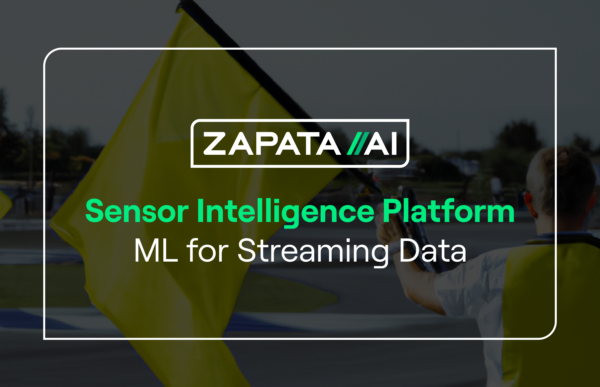Beginning your Quantum Transformation Strategy? Here Are 7 Pitfalls to Avoid.
Beginning your Quantum Transformation Strategy? Here Are 7 Pitfalls to Avoid.
Can the challenges be solved with classical high-performance computing (HPC)? In many cases, the answer is ‘Yes.’ That said, quantum computing methods – even when they don’t include an actual quantum computer – can increasingly provide a measurable ‘boost’ to classical compute resources.
Eric Reuthe
Life is complicated. Also complicated – IT architecture, especially at the enterprise level. And, looking forward to the challenges of integrating quantum computers into these architectures, it is only going to get more complex.
Complexity aside, quantum computing is now far enough along to have a trail of clues that point to strategies for near-term competitive advantage. As with any successful journey, the key is knowing the best route to take and what pitfalls to avoid on the way.
Fortunately, a relatively small – but growing – number of enterprises across industries have been blazing trails over the last few years as they prototype and build quantum capabilities. So, even in these early days of quantum, there’s a lot to be learned from these pioneers.
From Zapata Computing’s vantage point as a leader in quantum software and a hardware agnostic partner working with all the major vendors, it’s safe to say we’ve learned a thing or two…or seven. We’re working closely with enterprise customers to help them get to business impact today with quantum-ready (and mostly classical) applications in production.
Given our unique perspective, we want to pass on some of the biggest learnings to help those of you exploring quantum computing; from those just thinking about it all the way to those engaging with vendors and running pilots.
So, let’s begin!
A surface-level casing of the quantum computing space quickly turns up hardware announcements, funding rounds, the latest qubit count record, and a fair amount of hype. What everyone’s hungry for is the business impact story that goes beyond the proof of concept (POC). Not surprisingly, enterprise teams worldwide are working hard to get there, and those that are close may not want to share their competitive edge publicly.
In the next several years, we will see quantum-enabled solutions delivered as production systems. Then, when increasingly capable quantum devices come online, having deployment architectures in place that can utilize these machines will be critical to achieving competitive advantage.
But first things first.
It’s quantum computing – there are many potential pitfalls. Here are the seven we’ve seen cause the most problems:
1) Not defining what success looks like. Important questions to ask internally: What are the milestones of the project? How can you decide now so that, as milestones arrive, you have a way to assess whether to keep investing or change tactics? If you are successful, what is the target ROI? And will the solution deliver a measurable competitive edge? It’s also important to measure the current legacy solution you’re trying to outperform so you know if a quantum-enhanced solution is working better – even if just by a slim margin.
2) Not getting buy-in from lines of business. Avoid this pitfall by focusing on a challenging problem that has hit a wall with classical computing and is highly complex. Partnering with lines of business generally means the problems will be more valuable, more measurable and in production – ensuring that problems will be solved for business reasons and not just for the technology.
3) Not picking near-term use cases. Go with a near-term implementation that’s feasible for generating business impact (see #2!). This will likely require optimization and ML techniques in an approach that is mostly classical in the near-term. In some cases the best first step might just be quantum-ready classical algorithms that don’t even use a quantum computer but are designed to utilize one in the future.
4) Not accounting for architecture. Pay close attention to the integration of models into your overall technology architecture. Quantum will add to compute heterogeneity, and data is also fragmented in organizations. And all of this data complexity is only exacerbated by quantum, especially as quantum computers will remain outside the data center for years to come. Quantum hardware uptime is also a long way from the enterprise-level availability that we expect from our production systems, and an architecture needs to account for this as well.
5) Not remaining vendor flexible. It’s way too early to tell which hardware vendor and quantum architecture (ion trap, superconducting, photonic, annealing, etc.) is going to win. And we will want to use different architectures for different problem types; there won’t be one unique, all-inclusive architecture for quite some time, if ever. Don’t build capability for only one platform or architecture because it is still early days. Benchmark across all of them.
6) Not validating your models using real data. Validating models with real data will allow you to determine if your quantum application is generating the expected results. Using real data also forces the architecture issues and ensures that new quantum-ready solutions are compliant and secure with the organization’s requirements. Like classical machine learning models, they should be regularly tested and validated as changes in data or external trends could affect the accuracy of the model.
7) Not using existing (i.e., classical) compute resources to their fullest potential. Can the challenges be solved with classical high-performance computing (HPC)? In many cases, the answer is “Yes.” That said, quantum computing methods – even when they don’t include an actual quantum computer – can increasingly provide a measurable “boost” to classical compute resources.
One last piece of advice: don’t wait for quantum hardware to mature before starting – or even continuing – your quantum transformation. With Zapata’s Orquestra® platform, you can build and deploy today’s classical applications and tomorrow’s quantum applications at enterprise scale.
In collaboration with our enterprise customers, we are currently building quantum-classical applications delivered as production solutions. Then, when increasingly capable quantum devices come online, deployment architectures will already be in place to plug-in the newest machines. With most of our customers, we are building pilots toward production – not POCs – where the classical part of a solution is equally important to the quantum part.
The good news? Your company can do the same. Today.
The quantum computing journey has only just begun, and it’s already fascinating. It’s only going to get more fascinating and speed up – just like the AI/ML journey many enterprises started years ago. Join us on the journey and we’ll combine your AI/ML transformation learnings with our quantum experience and hard-earned wisdom to guide you to production solutions while avoiding the pitfalls. Please get in touch and we’ll be happy to dive into the details!


